Britain is quietly becoming one of 2025’s most interesting travel destinations — for a range of reasons. Here’s why you might want to get ahead of the curve and consider the UK for your next trip or article.
London’s still a safe bet if you want museums, theatre, and world-class food, but there is much more happening outside the capital.
York’s packed with atmosphere, from its cobbled lanes, medieval walls, to more pubs than you’ll manage in a weekend. It’s great for history lovers, but the growing food scene and indie shops give it a modern edge.

Further south, Bristol mixes creativity with maritime charm. Street art, harborside bars, and a strong music scene give it real personality, while the nearby countryside offers an easy escape.
If you’re into sport, catching a live match is a great way to soak up local energy. Football’s the big one, with clubs like Liverpool, Newcastle, and Brighton offering surprisingly accessible home games if you book early.
Rugby’s also a big part of the calendar. Currently, the Autumn Nations Series is in full swing across various UK stadiums, including Twickenham, Edinburgh’s Murrayfield, and Cardiff’s Principality Stadium.
Cricket, too, has its moments in the summer months, particularly at iconic grounds like Lord’s or Headingley.
Britain’s outdoors have always been underrated. In the Lake District, you’ll find big, dramatic views and quiet trails (with a pub at the end of most of them).
Further north, the Scottish Highlands offer that proper sense of space, with glens, lochs, and roads that seem to go on forever. The overnight sleeper train from London makes it surprisingly doable.
Wales isn’t short of adventure either. Eryri (Snowdonia) is packed with hiking routes, zip lines, and mountain biking, but without the same crowds you’ll get in more famous ranges.
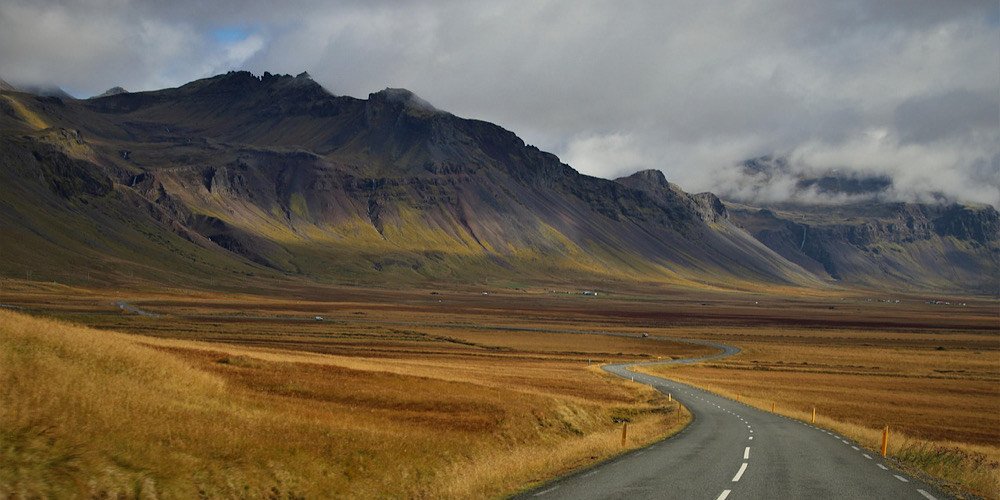
Cornwall remains the UK’s go-to coastal escape with its surf, cliff walks, sea air, and the laid-back vibe of towns like St Ives.
But if you want space and silence, head to Northumberland. The beaches are huge and often empty, and you’ve got castles like Bamburgh rising straight out of the dunes.
Northern Ireland’s Causeway Coast is another one for the bucket list. The Giant’s Causeway is the big draw, but the real charm is in the villages, sea views and cliff-top walking trails that feel far less touristy than they should.
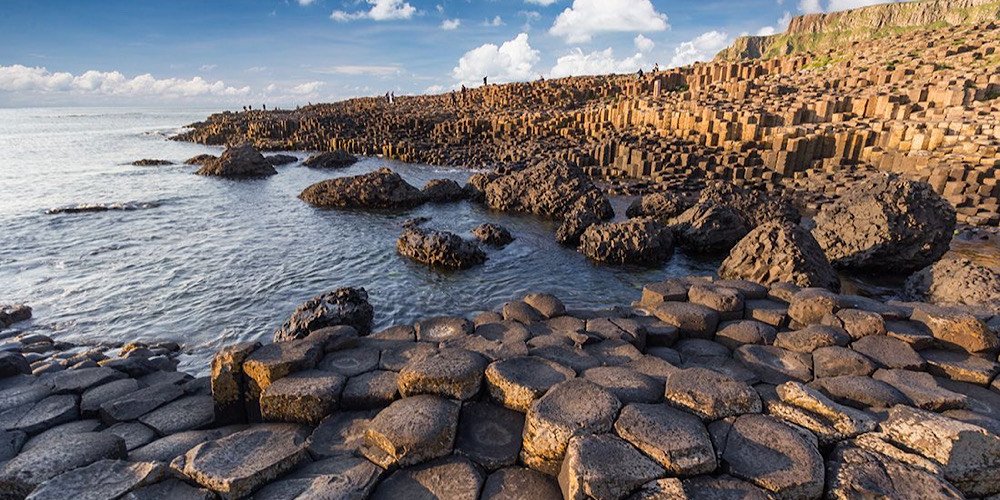
Britain’s strength for travelers is its variety. You can hop between characterful cities, lose yourself in wild landscapes, or slow down by the coast. It’s easy to get around and even easier to stumble into something memorable, making the UK a solid pick if you want a trip built on a mix of moments rather than one big attraction.
Abu Dhabi, the capital of the United Arab Emirates, is a city that blends modern sophistication with rich cultural heritage. Its skyline glitters with architectural marvels, while its cultural districts and pristine beaches reveal a slower, more refined rhythm. For travelers who value comfort and a seamless journey, business class flights to Abu Dhabi offer an ideal way to start this adventure. From the moment you step into the airport until you arrive at the opulent heart of the UAE, every element of your travel experience can match the city’s luxurious spirit.

Many major international airlines offer business class flights to Abu Dhabi, including Etihad Airways, Emirates (via Dubai with a short transfer), Qatar Airways, and several European and Asian carriers. Your choice may depend on loyalty programs, departure airport, or specific amenities such as onboard suites, dine-on-demand menus, or high-speed Wi-Fi.
To find the best deals:
From the outset, business class travelers benefit from exclusive check-in counters and expedited security lanes. This ensures a calm, efficient start to the journey.
Before boarding, relax in a premium airport lounge. Depending on the airline, lounges may offer à la carte dining, spa treatments, and private work areas. Lounges operated by Gulf carriers are often destinations in themselves, with interiors reflecting the luxury and design ethos of the Middle East.
The journey to Abu Dhabi can range from six to fourteen hours, depending on your departure point. Lie-flat seats with direct aisle access transform this time into an opportunity for real rest. Fine dining, complete with multi-course menus and regional specialties, creates an onboard experience that mirrors the luxury you’ll find on arrival. Premium amenity kits, noise-canceling headsets, and attentive cabin service ensure that every moment is curated for comfort.

Landing at Abu Dhabi International Airport, you’ll pass through modern, well-organized immigration facilities. Business class passengers often benefit from fast-track services, reducing wait times and allowing you to reach your hotel or meeting swiftly. Private car services and luxury taxis are readily available, offering a seamless transition from air to ground.
From the airport, a short drive delivers you into a city of contrasts—glass towers reflecting the desert sun, manicured gardens, and traditional souks nestled beside five-star hotels.
Emirates Palace Mandarin Oriental – An icon of opulence, complete with private beach, award-winning dining, and architecture worthy of a palace.
The St. Regis Abu Dhabi – Known for its personalized butler service and sweeping Corniche views.
Qasr Al Sarab Desert Resort by Anantara – Located in the Empty Quarter, this desert retreat offers luxury surrounded by endless dunes.
Bab Al Qasr Hotel – A modern property with Arabic design influences, close to cultural attractions.
One of the world’s largest mosques, it features 82 domes, over a thousand columns, and a dazzling array of marble and gold. The mosque welcomes visitors from all backgrounds and offers guided tours to explain its architectural and spiritual significance.
This museum is a masterpiece of architecture, with a vast dome that creates a "rain of light" effect. Inside, exhibits span civilizations and continents, reflecting Abu Dhabi’s vision as a cultural bridge between East and West.
A historic fort and cultural hub, Qasr Al Hosn offers an insight into the city’s transformation from a small fishing settlement to a modern capital.
A beautifully maintained stretch of sand along the city’s waterfront, perfect for a morning swim or an evening stroll.
Home to world-class attractions including Ferrari World, Yas Marina Circuit, and Yas Waterworld. The island also features luxury hotels and a vibrant dining scene.
Famed for its cultural district and pristine beaches, Saadiyat Island is also home to exclusive resorts and a championship golf course.

Abu Dhabi’s dining scene mirrors its cosmopolitan population. From Michelin-starred restaurants to traditional Emirati eateries, the variety is impressive. Popular experiences include:
Desert Safari – Dune bashing, camel rides, and stargazing in the world’s largest sand desert.
Al Ain – A UNESCO World Heritage-listed oasis city with forts, museums, and natural springs.
Sir Bani Yas Island – A wildlife reserve offering luxury eco-lodges and guided nature tours.
Camping is no longer just a summer activity. With the right gear, preparation, and sense of adventure, it’s possible to enjoy the great outdoors year-round. All-season camping allows you to experience nature in its full variety. From snow-covered forests to springtime blooms, golden autumn leaves, and crisp summer mornings by the lake. Whether you're chasing fall foliage, winter silence, or summer sunshine, the United States offers a wealth of destinations perfect for four-season camping.
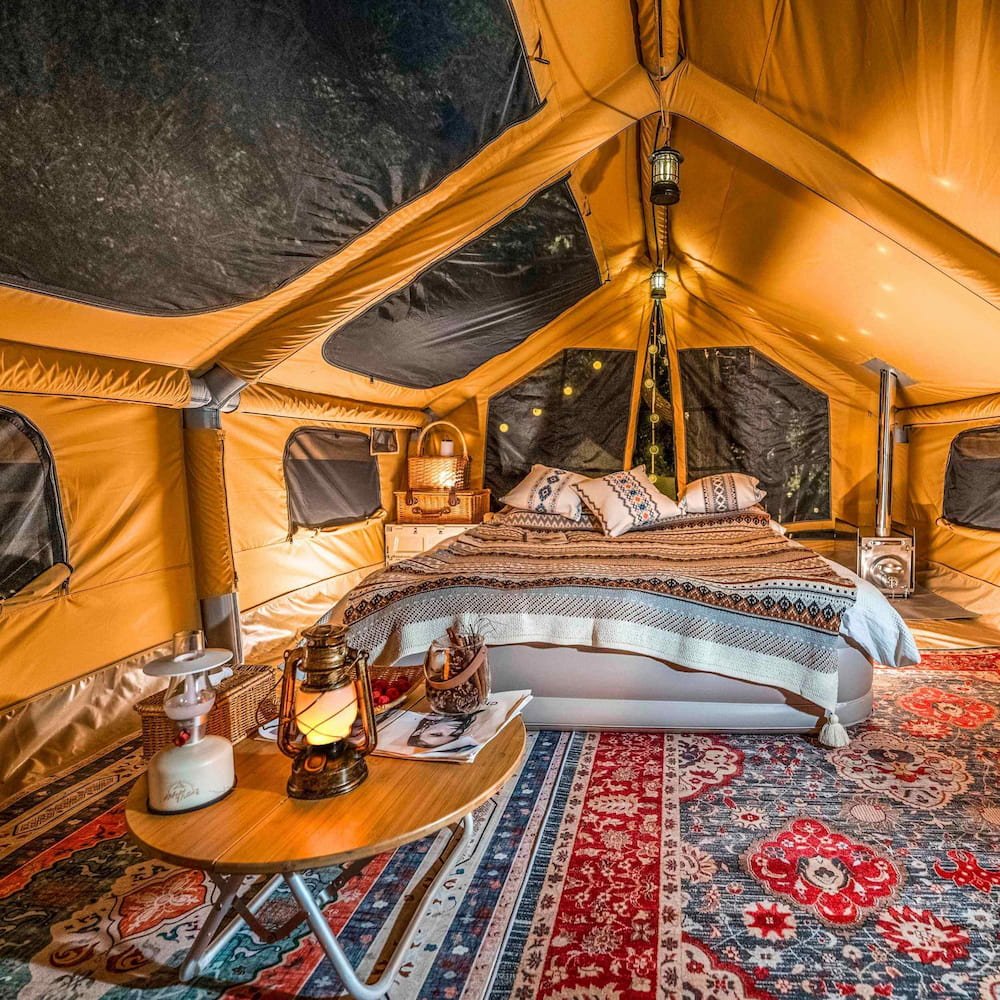
Of course, to embrace the outdoors in every season, you need reliable gear. All weather tents for camping provide the durability and insulation required to face a range of conditions while ensuring comfort and protection year-round. Once you’re well-equipped, all that’s left is choosing where to go.
Not all campsites are suitable for year-round use. The best all-season camping destinations offer:
Let’s explore some of the top all-season camping destinations across North America that meet these criteria and provide unforgettable outdoor experiences.
The Smokies are known for their misty ridges and ancient hardwood forests. While summer offers lush greenery and waterfalls, fall brings brilliant foliage, and winter reveals quiet snow-covered trails and peaceful solitude. Spring bursts with wildflowers and fresh growth.
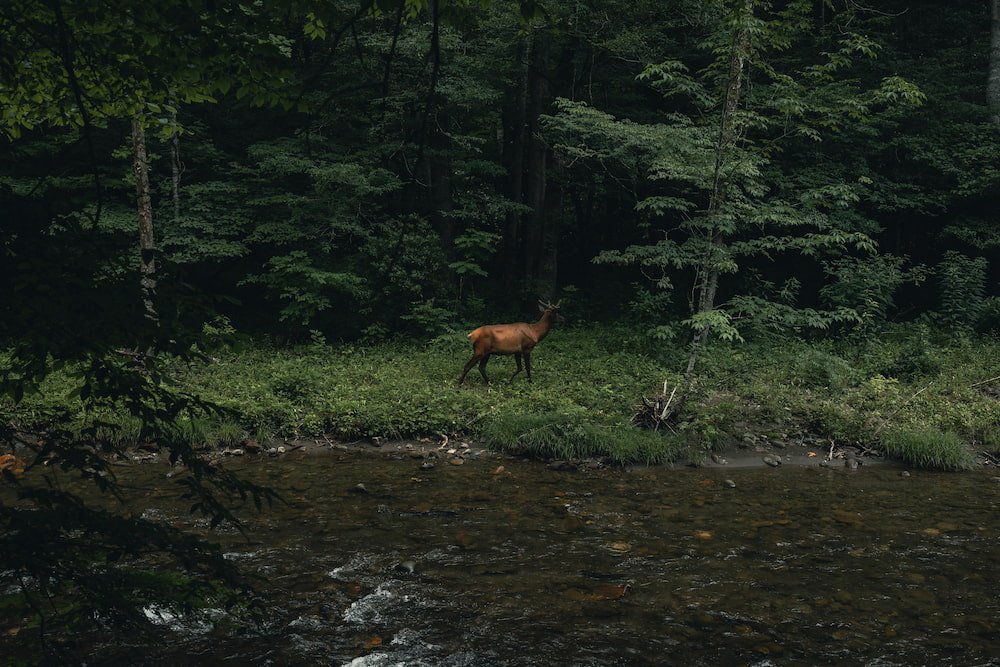
Best Activities by Season:
Tip: Some campgrounds close in winter, but Cades Cove and Smokemont remain open year-round.
This desert park is a top winter destination due to its mild daytime temperatures. Spring offers wildflowers, while summer brings heat (best for night stargazing), and fall provides excellent climbing and hiking conditions.
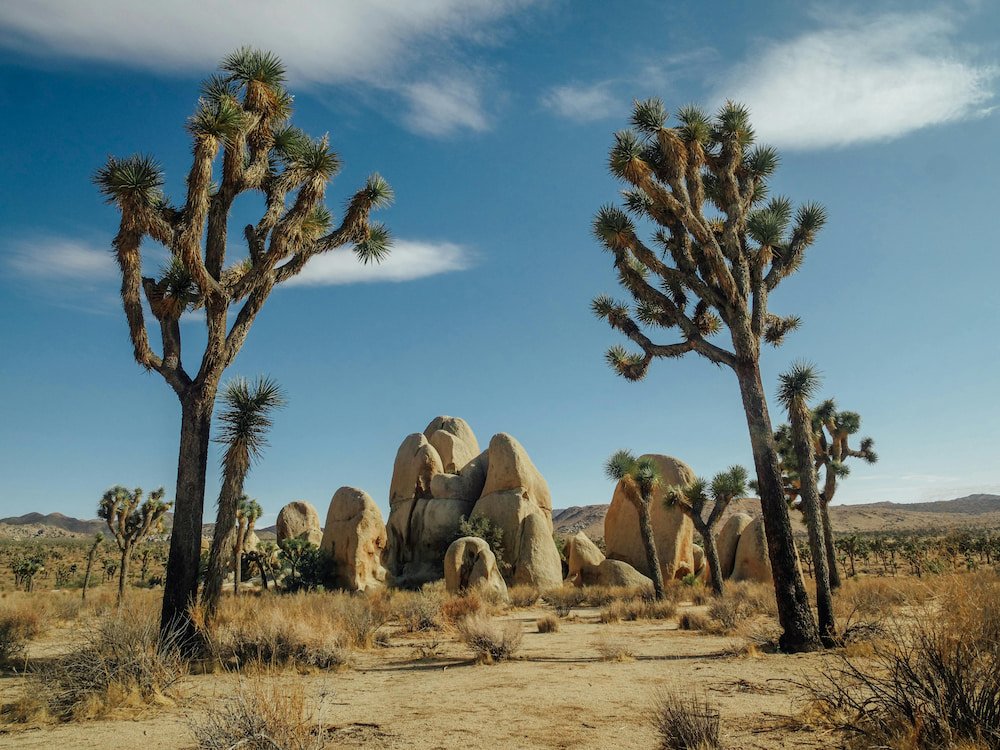
Best Activities by Season:
Tip: Bundle up for cool desert nights and consider wind protection for your tent.
Acadia combines the best of ocean, mountains, and forest. Its distinct seasons offer completely different experiences – from dramatic storm-watching and snow-dusted trails to summer swimming and autumn foliage.
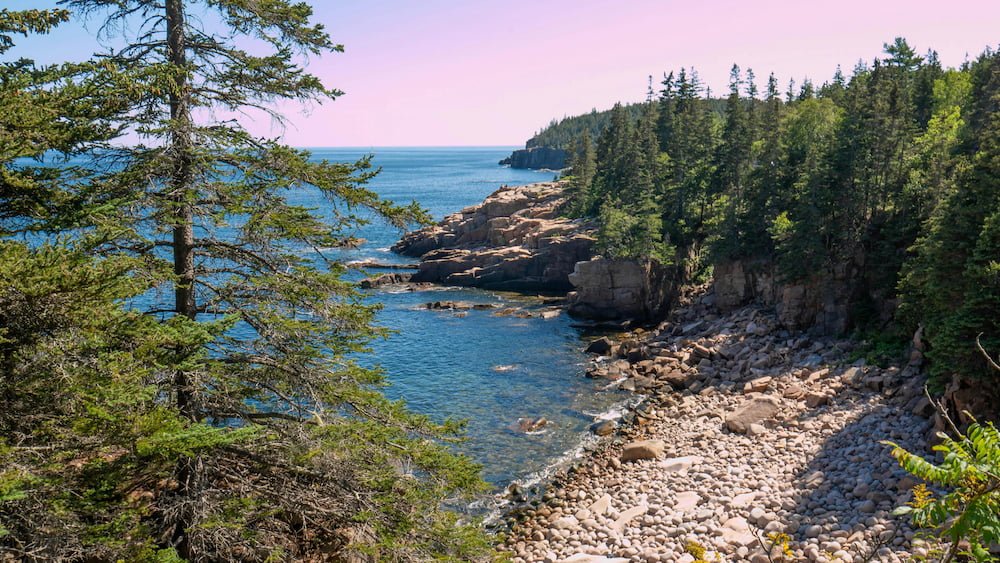
Best Activities by Season:
Tip: Blackwoods Campground is open year-round (with limited services in winter).
Mount Hood’s forests, rivers, and alpine lakes make it an ideal base for seasonal camping. The forest is stunning in the snow, lush in spring and summer, and golden in autumn.
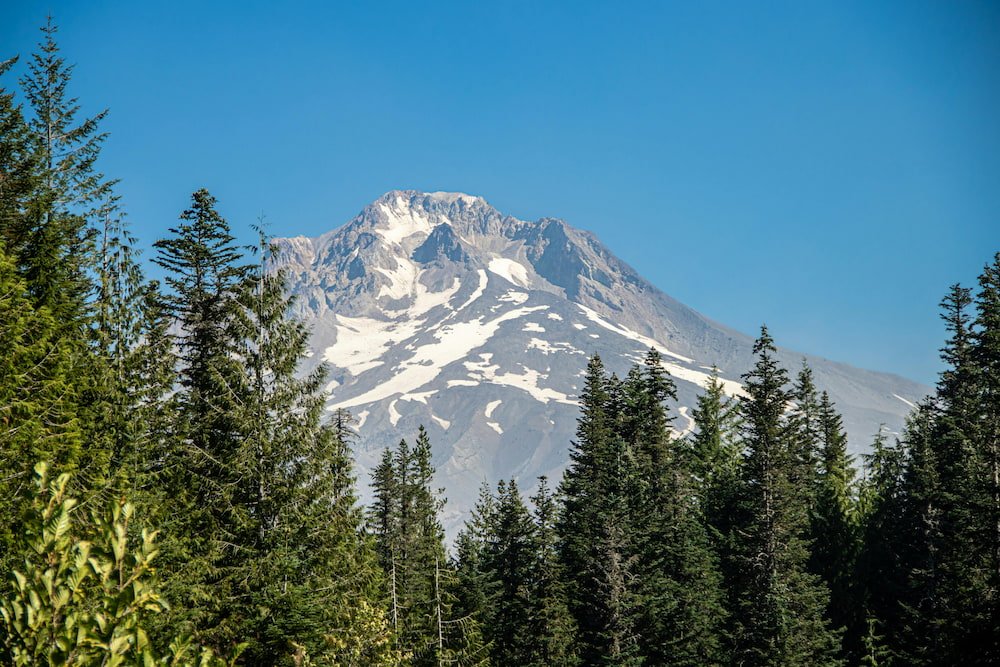
Best Activities by Season:
Tip: Snowfall can be heavy. Prepare for deep cold and bring an insulated tent and stove.
Shenandoah offers an accessible yet scenic camping option just a few hours from Washington, D.C. The park’s 105-mile Skyline Drive is open year-round and transforms with the seasons.
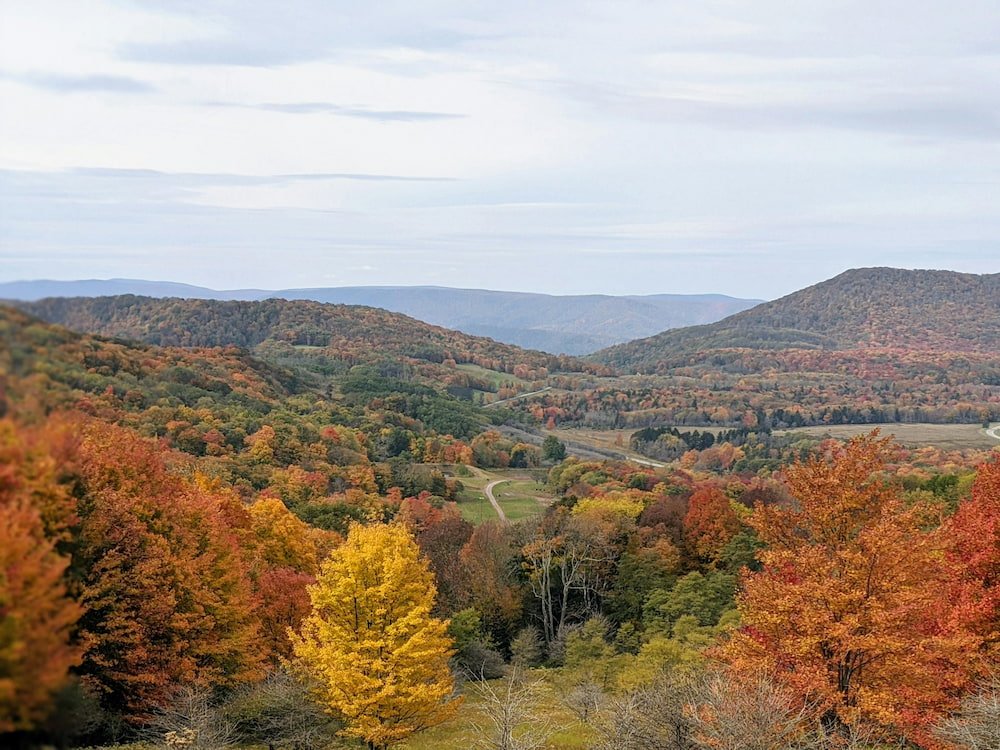
Best Activities by Season:
Tip: Big Meadows Campground opens seasonally, but backcountry camping is possible year-round with a permit.
While much of Glacier is snowed in during winter, all-season campers can find access points on the park’s western side. The transitional seasons—early fall and late spring—are particularly breathtaking.
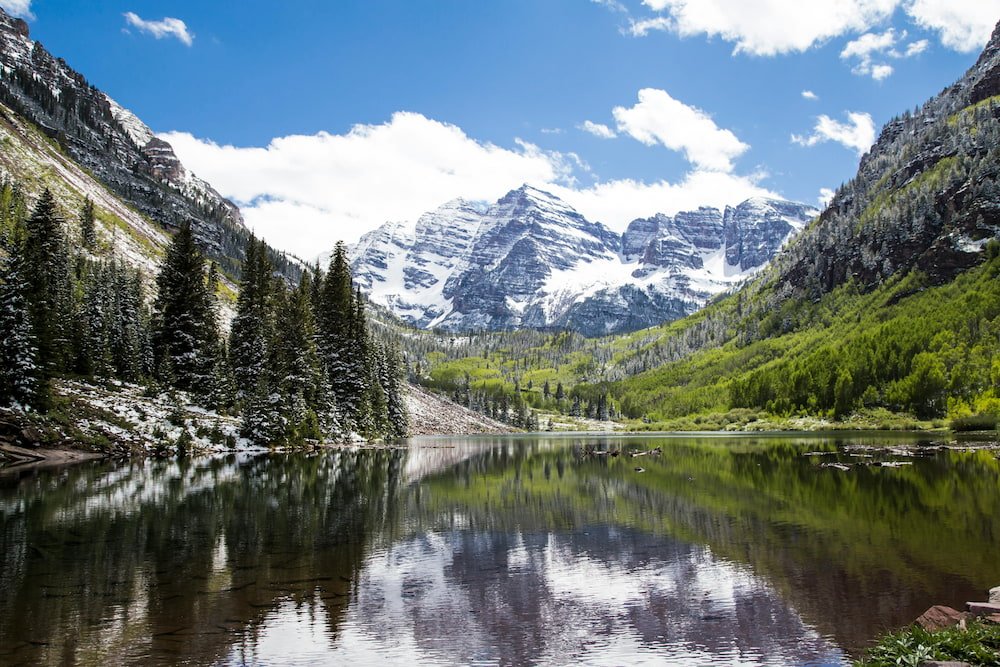
Best Activities by Season:
Tip: Winter camping is only for experienced campers. Prepare for extreme cold and sudden weather shifts.
Big Bend is an underrated gem for off-season camping. Winters are sunny and mild, while spring offers spectacular desert blooms. Summer is hot but tolerable at higher elevations.
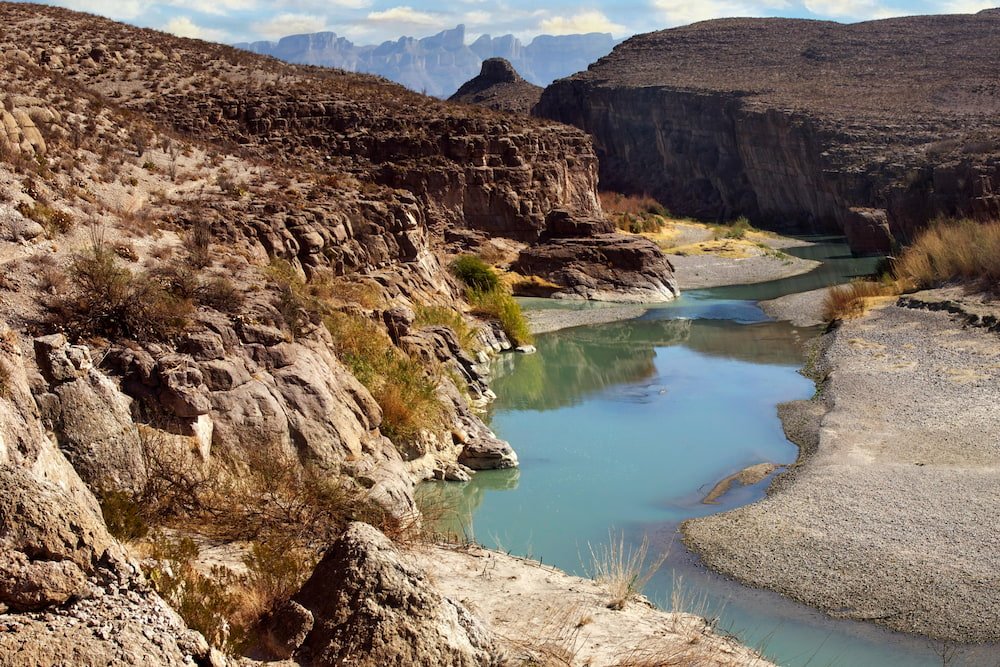
Best Activities by Season:
Tip: Plan for limited shade and bring plenty of water. Even winter nights can get cold.
Olympic National Park offers coastline, rainforest, and alpine landscapes, sometimes all in one day. This makes it one of the most dynamic destinations for four-season camping.
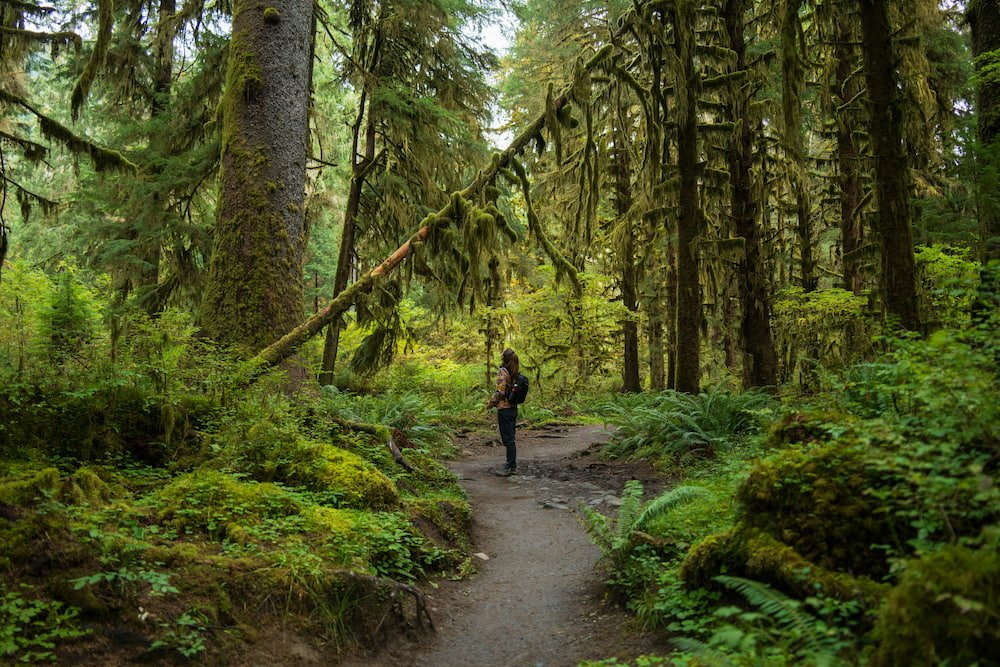
Best Activities by Season:
Tip: Prepare for rain in all seasons. Waterproof gear is essential, especially in shoulder months.
Whether you’re tackling cold-weather wilderness or staying cool in the summer sun, preparation is key:
Florida is more than theme parks and crowded beaches. For that reason, we haven't included Orlando in the mix. Even though we definitely did want to, because who can argue with the magic of Disney?
The rest of it is raw, wild, and full of surprises if you take the slow road. Read on for our top 3 places to visit if your backpacking travels take you through Florida.
Start in the north. Jacksonville will do nothing short of impress you. And for us, it's one of the most underrated places in Florida that people don't talk about. The beach here stretches for miles and feels like a true locals' beach. You’ll see surfers who don’t perform for tourists and families who grew up on these sands.
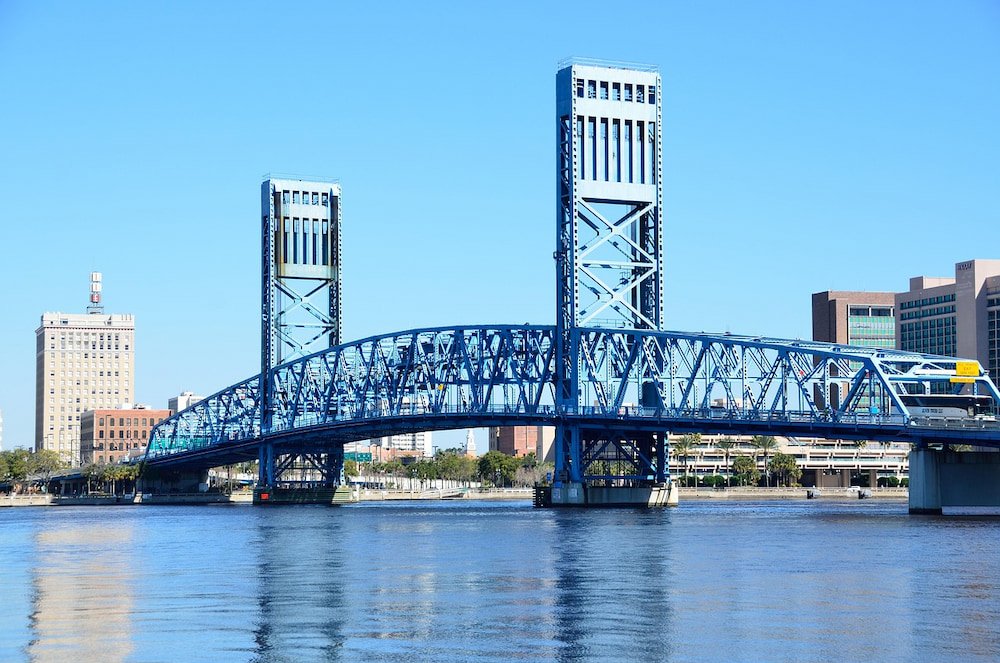
The downtown area is making a comeback, so you’ll find street art next to old diners and cheap tacos that beat any fast food. And how can we not mention Riverside? It’s the kind of spot that feels laid back but still gives you something to do. There are record shops and bookstores where no one’s trying to sell you anything. Just stories and people.
And when you're done, the Jacksonville hotels are some of the most inviting, relaxing places you can stay without paying a fortune like some of the places in Florida (we're definitely talking about Miami).
We think a lot of Florida is fast-paced, big money, and appearances. Jacksonville is everything but that. Feel the benefit of taking life slowly around good people.
Speaking of Miami, this is the place you go to see it all. And you really will see it all. Brad Pitt is on one corner, and a Lamborghini superyacht is around the other. Fear not, you can still backpack on a budget here if you stay on the outskirts of Miami and don't dine at the mid- or top-range restaurants. But still, this wouldn't be an article about Florida if we didn't tell you to go to Miami.

If you come to the beach, you’ll find it. If you come for the energy, you’ll feel it. There are the obvious places to go, like South Beach and the main strip, but if you want our advice, here are the best places to go in Miami:
South Beach might get all the attention, but if you walk long enough, you’ll find your own Miami.
When you need to breathe again, follow the road south to the Florida Keys. It's an absolutely sensational archipelago of tropical islands spread over 120 miles. Each one has a different mood.
Key Largo is the place to snorkel if you’ve never done it before. The reefs are alive and close enough to reach without a guide. Keep going, and you’ll reach Marathon. The sunsets here are arguably some of the best.

There's also Big Pine Key. Even though it's quiet, it's still worth visiting. The deer are tiny and wild, and they’ll walk right past you like they own the place. By the time you get to Key West, you’ll understand why some people just stay. It’s quirky and sun-soaked, and nobody really cares who you are.
Backpacking through Florida means skipping the usual. Unless you want the usual, then we'll see you in Disney and Miami South Beach. You’ll find the best parts where tourists aren’t always looking.
In our opinion, this state was made to be wandered.
Two weeks in Japan is just enough time to fall in love with the food, the neon signs of Osaka, the peaceful shrines of Tokyo, and the high-speed zoom of the shinkansen trains. But if you don’t plan smart, that dream trip can slip through your fingers.
A few early missteps — like not booking important tickets beforehand (such as a Japan Rail Pass alternative), staying too far from transport hubs, or getting overwhelmed by logistics — can easily derail your experience.

This guide shares some of the most important tips to help plan your trip to Japan, from building a smarter itinerary and choosing the right hotels to mastering Japan’s famously efficient transit systems.
With just a little preparation beforehand, you can focus on what really matters: enjoying Japan!
When arranging a trip to Japan, the best way to avoid unnecessary travel stress is by planning all those essential details in advance.
Nowhere is this more evident than Japan’s popular attractions. If you’ve got your heart set on the immersive dreamworld of teamLab Planets in Tokyo, grab those tickets as early as possible — they can sell out very quickly.
The Ghibli Museum in Mitaka is even trickier: ticket quantities are limited and released only once a month for overseas visitors. If certain places are must-sees, securing your spot early
is a must.
Booking accommodation early is also important. Japan receives over 35 million visitors per year, and hotel rooms in popular tourist areas like Shinjuku and Shibuya (Tokyo) or Kawaramachi (Osaka) go quickly!
While we’re on the topic of booking accommodation, don’t forget that your hotel can have just as big an impact as your sightseeing plans. After all, this is where you’ll relax after a long day of temple-hopping, sushi-eating, and train-catching — so it pays to spend a bit of time and pick wisely.
First, check what’s nearby. Having a convenience store like 7-Eleven, Lawson, or FamilyMart just around the corner is incredibly helpful. In fact, you’ll be surprised how often you’ll pop in for snacks, drinks, quick breakfasts, or to top up your transport card!
Second, check out the perks and amenities of your potential hotels. Many accommodations in Japan offer neat little extras like free access to an onsen, happy hour with free drinks, bike rentals, massage chairs, or even complimentary pajamas. These amenities can make all the difference in your stay.
Lastly (and most importantly!), consider proximity to public transport. Being near a metro or JR station can save you tons of time — after all, Japan’s cities are massive, and you'll likely be relying on trains every day. A 15-minute walk from the station might not seem like a big deal at first, but it makes a huge difference when you're tired or carrying 10 shopping bags from Don Quijote.

Arriving in Japan — especially after a long flight — can be chaotic. The crowds of people, the jetlag, the maze-like stations… To counteract this, it’s best to have an “arrival plan” before you head to the airport.
First, sort out your internet access. An eSIM or pocket Wi-Fi rental gives you instant access to navigation, translation apps, and train schedules — all things you’ll need within the first hour of landing.
Next, figure out how to get from the airport to your hotel. Japan’s train system is legendary, but figuring out where to transfer or which platform to stand on can be tricky when you’re tired and disoriented. Research train lines or airport shuttles ahead of time, note where you need to transfer (if any), and figure out which station exit is closest to your hotel.
Finally, consider purchasing a Suica or Pasmo card. These rechargeable IC cards work on trains and buses, and you can even use them to buy goods at vending machines and convenience stores. This not only saves time but also eliminates the need to deal with ticket machines every time.

One of the easiest ways to get overwhelmed in Japan is by overpacking your schedule. It’s tempting to squeeze in every attraction, but the best trick is to always leave a little bit of breathing room.
Try to plan one completely free day in each major city on your itinerary. For example, if you're spending five days in Tokyo, five in Osaka, and four in Kyoto, leave the last day in each city open.
These “buffer days” give you room to wander, revisit a favorite spot, or finally check out that cool café that you spotted on day one. Best of all, these spontaneous days often turn into the most memorable parts of the trip.
It’s no secret that Japan is a paradise for souvenirs, with its colorful daruma dolls and anime figurines to regional snacks and dozens (if not hundreds) of KitKat flavors. Once the shopping starts, your suitcase is sure to fill up fast.
To avoid lugging heavy bags between cities or struggling to find space on trains, consider using a takkyubin, which is a luggage delivery service like Yamato Transport, Sagawa Express, or Japan Post.
The process is simple: all you need to do is drop your suitcase off at the hotel front desk, and it will be waiting for you at your next hotel. Many accommodations assist with the paperwork, and prices are fairly reasonable. It’s a game-changer for comfortable travel.
If your two-week itinerary includes hopping around multiple cities like Tokyo, Osaka, Kyoto, Hiroshima and beyond, the Japan Rail Pass (JR Pass) can be a fantastic investment. The pass offers unlimited rides on most Japan Railways trains, including the world-famous Shinkansen (bullet train).
You’ll need to buy the pass before your trip (plan in advance!) and activate it once you arrive. While it doesn’t cover every train, it does include most major routes, and considering a one-way Shinkansen ride from Tokyo to Kyoto costs around 13,000 yen (about US$90), the pass quickly pays for itself with a few trips.
If you want to stay within a specific region, consider a regional JR Pass, which is often cheaper and tailored to local travel needs (such as the Kansai Area Pass for Kyoto, Osaka, and Nara).
Make no mistake: Queenstown alone has plenty to offer to local and foreign tourists alike. It didn’t earn the title “Adventure Capital of the World” without being home to some of the most adrenaline-pumping outdoor activities. In fact, the journey of European settlers to this remote part of South Island was an adventure in itself due to its challenging geography.
That said, the surrounding areas offer as much adventure, if not more, than Queenstown itself. Some of these must-visit places might be hard to find on the map, but that’s what this list is for. Whether as a first-time or returning visitor, here are undiscovered adventure activities outside town that are worth experiencing.

Most of the scenes from the first movie of the Lord of the Rings trilogy, The Fellowship of the Ring, were filmed outside Queenstown. Should you think of exploring these places by order of appearance in the movie, here’s a list to get started (spoilers, beware):
Note: The Remarkables is currently closed but announced that it’ll open on 14 June.
With nothing but nature in this itinerary, accidents here can be distressing for you and your group. Consider taking out NZ travel insurance for coverage in case of injury or other travel problems. Ensure your chosen plan covers at least medical treatment, trip cancellation or interruption, and personal belongings.

Somewhere in the rocky expanse of the Remarkables Conservation Area is an old but still-intact mountain cabin. No need to book the place in advance or pay for a night’s stay – it’s first come, first served. Amenities include a room for two and a fireplace.
That’s it. No Wi-Fi, no electricity, and no known trails. And it’s bring your own firewood.
For avid adventure seekers, the hike to the Two Mile Hut is a test of their backcountry tramping skills. The lack of trails means hikers are urged to determine their bearings using a physical map and compass (luckily, GPS also works). As the hut is located 1,460 meters above sea level, you’d want to be prepared for the effects of altitude sickness.
Given ample preparation, however, anyone who reaches the Two Mile Hut will be rewarded with unspoiled nature for miles around. It’s an ideal base for conquering the nearby 2,000-plus-meter summits.
According to the Department of Conservation, the ideal access point is at the south branch of Wye Creek. After which, make your way to Skingut Pass (Pt. 1659 in topographic maps). Another access point is via the Nevis River, though a longer route.
The Otago region is home to several ghost towns and settlements, once bustling thanks to the gold rush of the early 1860s. Saint Bathans is an exception, however, as it continues to be home to fewer than 10 locals. While such an appeal attracts tourists, travelers agree that the town is out of the way relative to other towns south.
The town’s most prominent attraction, the Vulcan Hotel, is one of only two places to stay and eat. Brave souls fancy booking Room One to get a glimpse of a ghost called Rosie. Locals say she was a sex worker during the gold rush who was killed and had her gold stolen.
Even the endless backcountry outside won’t spare you from the ghost stories. The artificial Blue Lake, beautiful as it seems, is believed to have its share of deaths. One account even speaks of a barmaid who drowned herself after learning of her lover's infidelity.
Don’t limit your bucket list adventure to just Queenstown. You’ll find plenty more to adore in the forests and mountains surrounding the town.
Europe is a backpacker’s dream—packed with history, stunning landscapes, and unforgettable experiences. Whether you’re exploring major cities like London or Berlin, or venturing off-grid, there’s something for every long-term traveller or weekend explorer. If you're craving adventure beyond the usual tourist trails, here are 16 epic activities to add to your backpacking trip.
Glide along the River Cam’s serene waters in a traditional punt, passing iconic colleges and beautiful sceneries. It’s the perfect way to unwind after visiting Buckingham Palace or hopping between European cities via high-speed train.
Whether you try your hand at steering (watch out for those low bridges!) or relax while a guide does the work, it’s the perfect way to see Cambridge’s iconic colleges from a unique perspective. Ensure to pack a picnic and enjoy the scenery as you go punting down the River Cam.
For thrill-seekers, standing on the edge of Norway’s famous "Troll’s Tongue" is a must. This 12-mile round-trip hike rewards you with jaw-dropping views over Lake Ringedalsvatnet. Pro backpacking tip: Start early and pack snacks. Western Europe’s trails are stunning but demanding!

Portugal’s west coast is a surfer’s paradise. Peniche’s consistent waves cater to all levels, and nearby cheap hostels make it ideal for backpacking budgets. Whether you're a beginner or a pro, the consistent swells and surf camps make it an ideal place to ride the Atlantic.
Explore Amsterdam by renting a bike. Pedal along picturesque canals, through vibrant neighborhoods, and past hidden gems most tourists miss. Just remember—bikes rule the road here, so keep up with the flow!

Leap into crystal-clear pools, rappel down waterfalls, and slide through natural rock slides in Switzerland’s breathtaking gorges. Interlaken is the hub for canyoning adventures that’ll get your adrenaline pumping.
Skip the expensive cruises and hop on a budget-friendly sailing trip around the Cyclades or Ionian islands. Swim in secluded coves, explore whitewashed villages, and party under the stars—pure island magic.

Slovenia’s Postojna Cave system is like stepping into another world. Ride an underground train through massive stalactites and stalagmites and keep an eye out for the mysterious olm (a rare aquatic salamander).
You don’t need to break the bank to hit the slopes. Resorts like Chamonix offer affordable hostels and ski passes for backpackers. Après-ski parties? Just as legendary as the runs. For cheaper lift tickets, look for midweek deals or multi-day passes, and pack layers.

Rent a car (or join a group tour) and drive along Ireland’s rugged west coast. From the Cliffs of Moher to remote Gaelic villages, this route is all about dramatic landscapes and warm pub welcomes.

Swap hostels for a night in a cozy treehouse deep in Sweden’s woods. Listen to the sounds of nature, maybe spot some wildlife, and unwind in total serenity. For the best experience, visit during the summer months when the midnight sun adds a magical glow to the forest. Just don’t forget bug spray!
Hike UNESCO-listed trails or tackle Via Ferrata climbs. The Dolomites deliver beautiful sceneries at every turn. It is known for its jagged limestone peaks, alpine meadows, and turquoise lakes await. The Via Ferrata routes (protected climbing paths) offer thrilling climbs with breathtaking views, which is perfect for adventurous backpackers.

Paddle through the serene, glacier-carved fjords of Norway, like Geirangerfjord, where waterfalls cascade down towering cliffs. Camp on remote shores and soak in the untouched beauty of Scandinavia.
Swap snow for sand and try sandboarding down the massive dunes of Maspalomas in Gran Canaria. It’s like snowboarding but with sunshine, warm breezes, and a desert-like landscape right next to the ocean. For the best ride, wax your board lightly to help it glide smoothly, and aim for early morning or late afternoon to avoid the scorching midday sand!
Take a refreshing dip in the crystal-clear Fairy Pools on the Isle of Skye. These magical blue pools beneath the Cuillin Mountains are fed by waterfalls—ideal for a brave cold-water plunge or a scenic hike.
Soar like a bird above the stunning Austrian Alps with a tandem paragliding flight in Innsbruck or Zell am See. Feel the rush of wind as you glide over snow-capped peaks, emerald valleys, and mirror-like lakes. It is an unforgettable way to see the mountains from a whole new perspective.
Explore the Arctic wilderness of Finnish Lapland, where you can pitch a tent or erect a tent and witness the mesmerizing Aurora Borealis dance across the sky. By day, try husky sledding, ice fishing, or snowshoeing through pristine winter landscapes.

From punting in Cambridge to paragliding in Austria, Europe’s adventures are endless. With cheap flights, flight deals, and budget flights, your Backpacking Europe journey starts now. Pack light, book the coolest hostels, and dive in. Where will you go first?
When most people think of Miami, they picture endless sandy beaches, crystal-clear waters, and glamorous nightlife. But for the adventurous traveler, there’s an entirely different side to the city waiting to be explored. The best experiences in Miami go far beyond the typical sun-and-sand scene, offering a thrilling mix of cultural, natural, and unexpected adventures that reveal the true heartbeat of this dynamic destination.

If you’re ready to swap your beach towel for a kayak paddle or your flip-flops for hiking boots, this guide will lead you through some of Miami’s most exciting off-the-beaten-path activities.
No adventure in Miami is complete without immersing yourself in the explosion of color and creativity at Wynwood Walls. What began as a revitalization project has blossomed into one of the world’s most celebrated outdoor street art installations. Walk among massive murals painted by internationally renowned artists, and let each wall tell its own vivid story.

For an even deeper dive, consider joining a guided tour to learn about the evolution of the neighborhood, the artists’ backgrounds, and hidden gems tucked away from the main streets. The City of Miami's official tourism page offers insightful resources and updates on local art events.
After soaking in the art, explore the surrounding area where you’ll find indie galleries, craft breweries, and vibrant cafés — perfect for taking a break while you reflect on the creativity you’ve just experienced.
If you’re craving outdoor adventure, paddle your way through the serene mangroves at Oleta River State Park, Florida’s largest urban park. Just a short drive from downtown, this natural haven offers a refreshing escape from the city's bustle.
Rent a kayak or paddleboard and navigate the park's winding waterways, keeping an eye out for native wildlife like herons, manatees, and even dolphins. The calm, sheltered waters make this an accessible and enjoyable activity for all skill levels. Pack a waterproof camera, because the scenery here — with its lush green canopies and quiet inlets — is worth capturing.
Oleta isn’t just about water adventures. You can also hike or bike its scenic trails, relax on the sandy beach, or enjoy a picnic under the shade of towering trees. It’s a perfect destination for a full day of nature-fueled exploration.
A short journey west of Miami transports you to one of the most unique ecosystems in the world: the Everglades National Park. Known as the "River of Grass," this UNESCO World Heritage site offers a fascinating look at Florida's wild side.

Climb aboard an airboat and zip across the marshy waters, watching as alligators, turtles, and wading birds appear from the sawgrass prairies. Knowledgeable guides share stories about the fragile ecosystem and its importance to South Florida’s environment.
If you’re feeling especially adventurous, consider a ranger-led hike or a kayaking tour through the park’s quieter waterways. Either way, the Everglades promise an unforgettable connection with nature.
Step into a world of rich culture and vibrant energy in Little Havana, Miami’s famed Cuban district. Stroll along Calle Ocho, where the scent of fresh Cuban coffee fills the air and the sounds of live salsa music spill out onto the streets.
Pop into a local café for a cortadito, watch skilled artisans hand-roll cigars, and visit Domino Park, where locals gather daily for lively games that feel like a celebration of community tradition. Time your visit with one of the neighborhood’s festivals, like the famed Calle Ocho Festival, for an even more immersive experience.

Little Havana offers a window into Miami’s multicultural soul, making it a must-visit for travelers eager to experience the city’s diverse heritage.
For a more active water experience, grab a paddleboard and head out onto Biscayne Bay. With its calm, clear waters and stunning views of the Miami skyline, the bay provides the perfect setting for both beginners and seasoned paddlers.
Early mornings and sunsets are particularly magical times to explore, as the sun casts golden light over the water and cityscape. Along the way, you might spot schools of fish darting below your board or dolphins playfully swimming nearby.
Many local outfitters offer guided eco-tours that combine paddling with marine education, giving you a deeper appreciation of the bay’s delicate ecosystem.
Miami is so much more than its beaches — it’s a city packed with diverse adventures for travelers willing to dig a little deeper. From exploring bold street art at Wynwood Walls to paddling through hidden mangroves and tasting the culture of Little Havana, the experiences in Miami extend far beyond the typical tourist path.
So next time you think of Miami, picture yourself gliding through its waters, savoring its cultural richness, and discovering its wild landscapes. Embrace the unexpected, and you’ll uncover a whole new side of the Magic City that most visitors never see.
Cabo San Lucas, or Cabo, is one of Mexico's top tourist hotspots. This sunny resort city on the southern tip of the Baja California peninsula offers many fun and relaxation opportunities.
Because of that, lots of people visit Cabo every year. Los Cabos, the region where Cabo is located, even saw a record growth of 47.3% in visitations from the U.S. in 2022. So, it's no wonder why it can be challenging to book tickets and a room. (1)
To score a spot in this vibrant city, keep reading. This article will tell you when to visit Cabo so you can enjoy the sun, sand, and waves to the fullest.

Arguably, the prime time to fly to Cabo is from the beginning of the Christmas season to Easter. Locals here are at their liveliest during this period. If you're after the good vibes, the parties, and the intoxicating energy, cross some days off anytime within these months.
You don't need to worry about the weather. Cabo San Lucas has a nice, warm climate all year round. From December to April, mild temperatures typically peak at 79.5°F (26.4°C), perfect for wearing swimsuits during the day and sweaters at night.
While Cabo San Lucas provides a vibrant atmosphere with easy access to restaurants, many attractions and nightlife, if you want a more tranquil luxury experience consider staying in Cabo Pedregal villa rentals. Pedregal, a gated luxury villa community that offers beachside accommodations offer premium amenities like ensuite bathrooms, gourmet kitchens, and sauna areas.
Enjoy the pleasant weather on your villa's spacious outdoor deck, which has a gorgeous view of the ocean panorama. You'll surely love this location if you're after a relaxing, picture-perfect vacation.
Peak season begins in December, with many tourists visiting for the holidays. Hotel rates are sky-high on Christmas and New Year's Eve. But if you book a stay for the winter months, you can enjoy the cool weather and maybe some gray whale-watching.
Temperatures in February are more pleasant, and the thin crowds more tolerable. It's the period right before spring break, so you'll be able to experience sunny weather with extra space to yourself.
By March, you'll feel the hotter weather and see many families and young adults arriving for spring break. Semana Santa, or Holy Week, might see even more people and higher hotel rates by April.
Others would say the early summer months of May to June are the best times to visit Cabo. Cinco de Mayo festivities are happening, and the perfect weather is apt for celebrating. Swimming also won't make you freeze, as average water temperatures are in the 70s.
These months offer great discounts, too. Just book your accommodations and tickets around late winter to find some deals.

A budding surfer should know when to visit Cabo to catch the waves. Some pros recommend going in May, which is the ideal time for surfing. Beaches like Todos Santos and Medano Beach offer exciting swells yet are calm enough for others to kayak.
You may notice the temperature rising in June. Crowds are much thinner this month, allowing you to enjoy watching surf competitions minus the commotion.
If you're wondering when to visit Cabo on a tighter budget, consider going from July to September. The rainy season brings hotel prices down significantly. August, in particular, is the cheapest time to travel. You could save up to 7% on international flights compared to flying in other months. (2)
This period is also peak hurricane season. Keep abreast of weather updates if you plan to visit Cabo during this time. However, that shouldn't stop you from visiting and enjoying resort pools in the mornings.
July is the hottest month, so expect average temperatures and humidity to be much higher. But crowds are also at their peak at this time of the year. You might spot turtles nesting and laying eggs on the beaches.
Tropical storms are more frequent in August, so outdoor activities might be impossible. On a good day, you could snag a chance to go fishing by the Cortez beaches.
Invest in travel insurance for safety during Cabo's rainy season, especially if going on a cruise. Medical emergency claims contributed to 27% of all paid claims in 2024, mostly coming from cruises. (3)
Expect summertime storms to grow more intense with heavier rains this month. There are still many fun things to witness and experience, though. For example, Mexican Independence Day falls on September 16, so you could participate in cultural events.
The fall shoulder season has scattered rainfall, but by November, it will become dry again. Come October, prices will rise to prepare for incoming peak seasons once more. So, start packing for beach adventures in the city early on.
Fans of fishing tournaments and local events can't miss Cabo in October. From the Los Cabos Billfish Tournament to the Fiestas Tradicionales Cabo San Lucas, you'll have something to see and do.
November's weather slowly creeps back down while rainfall lessens. Because of this, local events pop back in, like the Los Cabos International Film Festival. Book your flight months in advance to celebrate Thanksgiving in Cabo for a sweet deal.
Not sure when to visit Cabo? It depends on what season and type of weather you're aiming for. Winter to early summer is ideal if you prefer comfortable weather and swimmable waters. Otherwise, if you don't mind the rain and are on a tight budget, visit from late summer to fall.
Each month offers various activities and events that any visitor will enjoy. Just arrange your travels at the right time and pack wisely. Cabo will surely make your stay worthwhile, no matter the season.
References
1. "Los Cabos, Mexico Hits Record Tourism Numbers—Here's Why," Source: https://www.forbes.com/sites/judykoutsky/2022/10/20/los-cabos-mexico-hits-record-tourism-numbers-heres-why/
2. "New Report: This Is the Cheapest Month to Travel," Source: https://www.rd.com/article/cheapest-month-to-travel/
3. "This type of trip had the most medical emergency travel insurance claims last year," Source: https://www.usatoday.com/story/travel/news/2025/02/08/travel-insurance-medical-emergency-claims/78296048007/
Papua New Guinea is, in a true sense of the word, a diver’s paradise. This smattering of islands to the northeast of Australia boasts a largely undisturbed and pristine underwater world. Unlike many other dive destinations that have become overrun with tourists, the corals here remain intact, and marine life thrives. It’s a dream for backpackers looking for an off-the-beaten-path adventure. Whether you’re an experienced divemaster or you’ve just got your Open Water, these essential dive spots will take your breath away.

This magical area is sometimes called the “coral capital” of the world, and you’ll see why the second you enter the water. This bay is home to a jaw-dropping 900 species of fish and 400 types of coral. If you’re lucky, you might even see Hammerhead Sharks at Inglis. It’s one of the most biodiverse dive sites not just in Papua New Guinea but on our great blue planet. The best spots include:
Tufi is unlike any other diving destination in the world. Here, the rainforest meets the reef, where drowned river valleys known as ‘fjords’ blend rich biodiversity and WWII wrecks. If you’re into muck diving, you’ll also get a chance to spot rare, weird, and wonderful macro critters like ghost pipefish and nudibranchs.
If impressive underwater landscapes are more your thing, there are plenty of overhangs and deep walls that descend into the blue. WWII relics also litter the seabed, with sunken aircraft and shipwrecks to explore. Here are some of the top spots:
Milne Bay is a non-negotiable, can’t-miss diving destination if you’re in PNG. It’s famous for giant manta rays, whale sharks, and abundant coral gardens. Historic WWII wrecks are options here, too. Head to Black Manta Point for your best chances of sighting graceful mantas as they soar through the marine scenery. For overwhelming splashes of bright corals, Deacon’s Reef is a world-class bucket-list spot. Once that’s ticked off, Wahoo Point is a great site for seeing hammerhead sharks and big pelagic fish like tuna.
Papua New Guinea is a dream come true for divers, regardless of your experience of dive style. Whether you’re into tropical coral walls, mesmerizing mantas, or dramatic shark feeding grounds with deep sea drop-offs, there’s something here for everyone. It’s one of the last remaining untouched areas of natural beauty, with the added bonus of WWII history beneath the waves.
